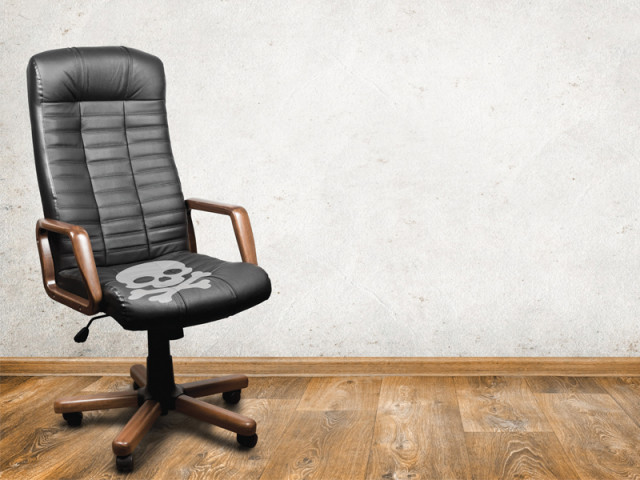Suicide by sitting
Studies show that people who sit for long periods have an increased risk of diabetes and heart disease.

Studies show that people who sit for long periods have an increased risk of diabetes and heart disease. DESIGN: ESSA MALIK
It’s becoming common knowledge that, across the world, the state of our health has reached the lowest point in human history. For those of us who’re bent upon making the changes required to honour our status as the most intelligent creatures on the planet, it’s both exciting and intimidating when a new idea is unearthed; a challenge (of reciprocity) presented alongside. Brace yourself thus, as a new inductee for the ‘diseases of civilisation’ has been identified — and it’s a big one.
When we think of figurative usage of the term ‘suicide’, the most immediate and enduring example would likely be that of smoking. Now, the hazards of the latter are old-news, and we are all sufficiently familiar with them. It may thus surprise people all the more that various unhealthy activities, including smoking itself, are taking a back seat. There’s a new chief in town and its name is ‘sedentary behaviour’, but we more lovingly refer to it as sitting. (Sidebar: if you, for a moment, pictured an overweight fellow sitting in a chair, two thumbs-up to you).
What?
The definition for ‘sedentary behaviour’, while technically any activity that involves low energy-expenditure, is provided by the National Institutes of Health to include, quite simply, sitting and lying down. And the aforementioned is at the forefront of a new field of health research, ‘inactivity physiology’, which has sent shock wave across the health and medical world and traversed well beyond.
How come?
Health researcher Chris Kresser has kept track of this research stream as well as anyone. In his blog and podcast, Kresser talks about the findings.
• Studies show that people who sit for the longest periods across the day have a 2 and 2.5-fold greater risk of developing diabetes and heart disease, respectively, as well as a 90% greater chance of eventually dying from the latter.
• Additionally, sitting will limit the production of a critical fat-burning enzyme, ‘lipoprotein lipase’, in basically an unredeemable manner. According to the NIH’s publication, regular physical inactivity will reduce the latter by up to 90-95% while even a four-hour treadmill-walking exercise bout failed to increase the enzyme’s activity.
• Most importantly, these effects persist regardless if the individual is meeting the recommendations for engaging in moderate-high intensity exercise.
Other research, appearing in an article in The New York Times, ‘Is Sitting a Lethal Activity’, shows that studies done of fit, young individuals have showed up to a 40% increase in a marker characteristic of diabetes (ie loss of insulin-sensitivity, or ‘blood-sugar control’) after a mere 24-hours of being sedentary.
Researchers across the board are unequivocal about the issue: the sitting epidemic — a ‘lethal activity’ that is unaffected by physiological behaviour during the rest of the day — is severely hampering the quality of people’s lives and, not the least, reducing its length by several years.
The standing revolution (and other solutions)
One need not go much farther than Chris Kresser’s blog — who recently installed a treadmill desk for himself — for evidence of the extent of enthusiasm for a change. Across the US, office-spaces are being re-organised as employees increasingly choose to stand and work — an endeavour greatly aided by various enterprises who’ve deftly improvised with the introduction of standing desks to replace the conventional computer table.
For those who’re helpless but to sit, however, such as when traveling by air or driving, you need not feel completely powerless. Chris Kresser suggests planning prolonged bouts of sitting with standing/walking breaks of two to threee minutes, ideally every half an hour, and to not allow for more than two hours of continuous sitting.
The NIH study corroborates this plan and shows evidence that such interruptions have mitigating effects on the health markers otherwise devastated by prolonged sedentary behaviour.
The NIH study also reminds us of the phenomenon of ‘insidious health hazards.’ When an activity is as widespread and familiar as smoking has been in recent times, there is a kind of ‘diffusion of responsibility’, with people finding it hard to conceive that they would ever experience the purported hazards first-hand.
The best of us may recognise thus: we have a new avenue to conquer.
Now, first up, to somehow explain the standing part to the hairdresser…
The author is the head of Scholars by Profession, a local research-initiative. Find out more at www.facebook.com/scholarsbyprofession, or reach Haris at harishseyal@gmail.com
Published in The Express Tribune, April 8th, 2013.
Like Life & Style on Facebook for the latest in fashion, gossip and entertainment.


















COMMENTS
Comments are moderated and generally will be posted if they are on-topic and not abusive.
For more information, please see our Comments FAQ